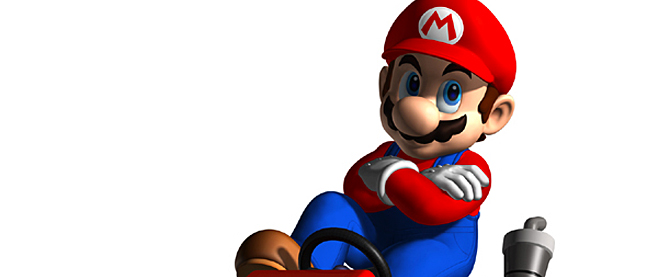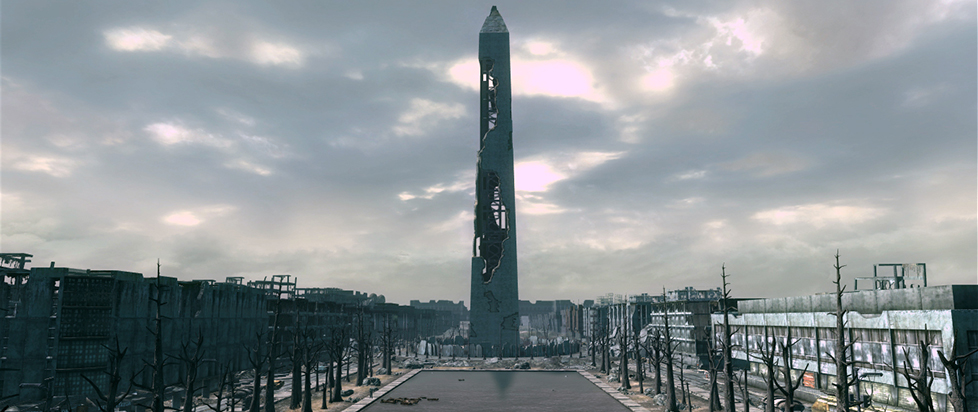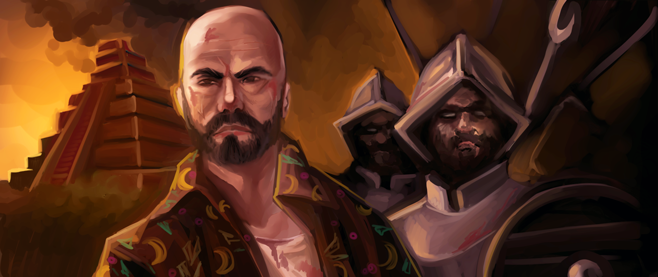
Max Payne 3 and the Case of the White Man’s Burden
Superficially, Max Payne 3 is an action game centered around blowing the heads off of thugs in ways that would give John Woo a giddy erection. Diving down stairs, pistols akimbo, raining a torrent of hot lead that would seem more fitting spouting forth from the vengeful maw of an ancient Aztec blood god – Max Payne 3 is the pure, raw distillation of everything gamers crave in their shooters.
Peel back a few layers, however and, much like the majestic onion, Max Payne 3 reveals itself to be a hard-boiled noir detective story, very much akin to the classics of the genre. Our titular ex-cop is an emotionally broken wreck, haunted by the murders of his wife and daughter, and seeking to either kill the pain with booze and prescription narcotics or throw himself into one more firefight that just might end it all. He’s a hero, but the fact that he does good is more an incidental side effect of his ongoing battle with internal demons than anything else. Granted, this is routinely expressed by Max shooting up the place in spectacular fashion, but the overarching mood of the game is far from jovial, adolescent posturing. Instead, everything is awash in fatigued, melancholy overtones. At one point, Payne himself describes the experience as “another futile quest for revenge.”
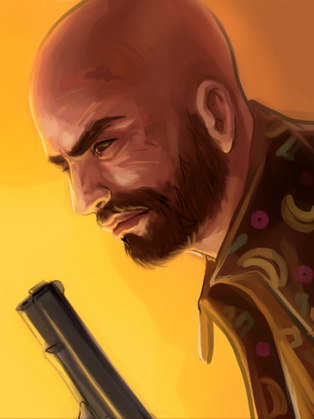 Oh, but there are yet more layers to this story, boys and girls. Before we get to that, though, let’s cover the disclaimer: The following text is based entirely on inference, caffeine, sleep deprivation and a surprisingly vast, yet mostly useless, understanding of geopolitical history. I have no insider knowledge that what I’m about to tell you is in any way accurate, but it does sound quite nice, so if nothing else, you can use this information to impress cute members of the opposite sex with thick-rimmed glasses and a surfeit of designer clothing featuring the face of Che Guevara.
Oh, but there are yet more layers to this story, boys and girls. Before we get to that, though, let’s cover the disclaimer: The following text is based entirely on inference, caffeine, sleep deprivation and a surprisingly vast, yet mostly useless, understanding of geopolitical history. I have no insider knowledge that what I’m about to tell you is in any way accurate, but it does sound quite nice, so if nothing else, you can use this information to impress cute members of the opposite sex with thick-rimmed glasses and a surfeit of designer clothing featuring the face of Che Guevara.
Now, let me tell you a story. Yes, I promise I’ll get to the crucial bit in just a moment, but first you need a bit of background info. See, there I was yesterday, playing through the final sections of Max Payne 3, when I came upon a museum display dedicated to the creation of the Panama Canal. As Max, I approached one particular section that contained stuffed models of two American explorers clothed in 19th-century gear and posed as if they were surveying the Central American landscape. Max looked at the figures for a moment before drawing a parallel between his violent excursion to the area and the construction of the canal: White men had been coming to this area for centuries in an effort to “fix” things, and much as in Max’s case, the results have often been horrific for the native population.
Seeing that, I began to wonder if this entire game wasn’t actually a metaphor for the numerous times the white man had come to visit South and Central America, leaving nothing in his wake save for corpses, plague and whatever nation’s flag that particular group happened to be toting around. The idea seemed silly, like the kind of thing you’d read on one of those highbrow gaming sites that prides itself on being more literate than the average news aggregator, while exclusively serving a tiny audience of industry personnel and obnoxiously elitist twenty-something pricks [AHEM – Editor]. So, I dropped the idea onto Twitter. “Max Payne 3 is a metaphor for the white man’s ham-handed, hyper-violent meddling in South and Central America over the past two centuries,” I typed, smirking at the pretension of the idea.
Almost immediately people began responding. Most were unsure if I was kidding or not, but the idea seemed to have struck a chord. The more I thought about it, the more I realized there might be something to this. That’s about the time I came upon a scene in Max Payne 3 where Max, having just shot his way through a dilapidated building full of Brazilian police officers, confronts their leader. “You’re a proper American hero,” the thug says sarcastically, alluding to the massive body count Max has racked up during his short time in Brazil. “You try to help the poor, and now they’re dead. The great American savior. You think you make any difference?” he adds. Max grits his teeth and growls, “At least I tried,” but that sentiment is drowned out by the sound of explosives fatally wounding the structure they were standing on.
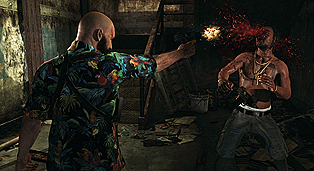 That sounds eerily similar to the justification used for centuries by nations seeking to enter foreign countries. “We come to help the impoverished, technologically-backwards masses,” has become the de facto mission statement used to explain foreign military action, whether in our modern world or 500 years ago. Think I’m being histrionic, or desperately grasping for material to justify my chosen topic? Sorry, but history provides all the evidence I need. Let’s run down the highlights, shall we?
That sounds eerily similar to the justification used for centuries by nations seeking to enter foreign countries. “We come to help the impoverished, technologically-backwards masses,” has become the de facto mission statement used to explain foreign military action, whether in our modern world or 500 years ago. Think I’m being histrionic, or desperately grasping for material to justify my chosen topic? Sorry, but history provides all the evidence I need. Let’s run down the highlights, shall we?
In February of 1519, Hernán Cortés led a group of Spanish conquistadors into the heart of the Aztec empire in what is now Central Mexico. Utilizing both superior firepower and pure dumb luck, the Spanish managed to topple the Aztec capital of Tenochtitlan after three years of heavy fighting. In hindsight, this is seen as a pivotal moment in Spain’s efforts to colonize Mesoamerica. Though officially the goal of this expedition was to civilize the “savage” Aztec people by bringing them under the Christian wing of the Spanish empire, Cortés’ men slaughtered thousands (including women and children), and even after the Aztecs had surrendered, there were widespread reports that Cortés and his men habitually engaged in horrific abuses of the indigenous population. Likewise, while the Spanish rewarded themselves with huge tracts of land and the plundered riches of the Aztec empire, the native peoples were reduced to little more than slaves. Having been forcibly stripped of their homeland and their religion – Cortés effectively outlawed the practice of traditional Aztec religious ceremonies – the once-proud Aztecs were forcibly absorbed into the Spanish empire.
Fast-forward a bit to 1880, when the French tapped Ferdinand de Lesseps (creator of the Suez Canal) to build a canal connecting the Pacific and Atlantic Oceans. The most efficient way to accomplish this feat was to cut through a relatively thin portion of Panama. Though the French effort would ultimately fail due to massive incompetence, mismanagement and widespread malaria outbreaks (which claimed the lives of many Panamanian workers the French had hired), the United States would finally complete the canal in 1914, though not before pressuring the newly-formed Panamanian government into signing an agreement that would grant the U.S. a nearly century-long lease on the canal in exchange for American troop support in Panama’s rebellion against its Colombian rulers. Surprisingly, U.S. troops killed very few Colombians as a result of this agreement, likely because it was more efficient to simply pay off those Colombian soldiers assigned to guard the canal construction area. Still, it must be pointed out that America’s motives here were ultimately self-serving, as the completion of the Panama Canal is now viewed as one of the key reasons for America’s rise to international superpower status, while Panama remains as destitute as its Central American neighbors.
 Now, let’s jump forward once again, this time to 1964 – the height of the Cold War. While Communist powers sought to ingratiate themselves with Latin American countries in an effort to surround the U.S. with their Marxist ideology, American government officials were looking for ways to sway these disputed areas to democratic ideals – or, failing that, unwavering allegiance to whatever course of action the U.S. might be forced to take against our foes in the USSR. Thus, America launched Operation Brother Sam, in which our ambassador to Brazil, a man named Lincoln Gordon, was directed by President Lyndon B. Johnson to do whatever was necessary to overthrow João Goulart, leader of Brazil’s leftist government. Along with inciting a coup against Goulart, Gordon ordered 110 tons of ammunition (including tear gas) to be airlifted to the rebels. He also managed to acquire naval support in the form of the aircraft carrier USS Forrestal, two guided missile destroyers and four standard destroyers. Needless to say, Goulart’s supporters couldn’t withstand the military strength of the rebels covertly aided by the CIA and his regime toppled in short order. Goulart was subsequently replaced by the U.S.-backed Humberto de Alencar Castelo Branco and…hey, wait a minute! Branco? That name sounds familiar.
Now, let’s jump forward once again, this time to 1964 – the height of the Cold War. While Communist powers sought to ingratiate themselves with Latin American countries in an effort to surround the U.S. with their Marxist ideology, American government officials were looking for ways to sway these disputed areas to democratic ideals – or, failing that, unwavering allegiance to whatever course of action the U.S. might be forced to take against our foes in the USSR. Thus, America launched Operation Brother Sam, in which our ambassador to Brazil, a man named Lincoln Gordon, was directed by President Lyndon B. Johnson to do whatever was necessary to overthrow João Goulart, leader of Brazil’s leftist government. Along with inciting a coup against Goulart, Gordon ordered 110 tons of ammunition (including tear gas) to be airlifted to the rebels. He also managed to acquire naval support in the form of the aircraft carrier USS Forrestal, two guided missile destroyers and four standard destroyers. Needless to say, Goulart’s supporters couldn’t withstand the military strength of the rebels covertly aided by the CIA and his regime toppled in short order. Goulart was subsequently replaced by the U.S.-backed Humberto de Alencar Castelo Branco and…hey, wait a minute! Branco? That name sounds familiar.
Oh, right! Branco is the surname of multiple central characters in Max Payne 3! There’s Fabiana Branco, the pretty, wealthy socialite, her husband Rodrigo Branco, the wealthy real estate mogul and his two brothers – Marcelo and Victor. The former is a coked-out hedonist with no aspirations beyond snorting, drinking and fucking his life away, but the latter is a politician who, as those who’ve finished the game already know, turns out to be a royal bastard. In short, Victor masterminds the murder of both of his brothers in an effort to bolster his own political career, and he attempts to pin the killings and collateral damage on a washed-up, junkie ex-cop from America: Max Payne.
It seems a convoluted plan, but as it’s explained over the course of the game, you come to realize that the whole idea hinges on the very real, very dangerous stereotypes that exist in Brazil regarding Americans. By meddling in the affairs of our neighbors to the south for centuries, we’ve created a kind of slow-boiling resentment in the average Brazilian. Not that you’d be clubbed to death immediately on arrival if you traveled there for vacation, but when a popular local politician makes it seem as if a trigger-happy cowboy American detective had murdered a few hundred people in the local favela, the population will simply sigh and nod their heads.
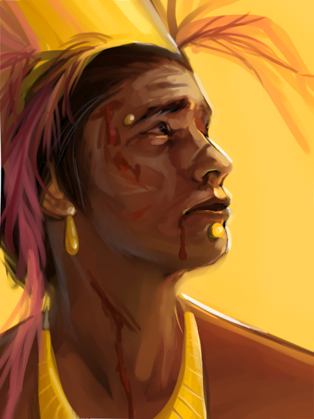 Oh, we should also probably discuss that stereotype a bit more, huh? Yeah, that’s pretty much our fault too. See, over the past century, American has transformed itself from a massive industrial superpower to a country whose primary export is pop culture. Our films, our music, our ideas – other countries are constantly inundated by these things, and given our comparatively massive wealth, it’s difficult for local culture to be heard over the blaring klaxons declaring the U.S. as “the land of the free and the home of the most badass motherfuckers on the planet.” I dunno if you’ve been paying much attention to pop culture lately, but Americans absolutely love the idea of the one-man army. Hell, the 1980s were as defined by cinematic hand jobs to this masculine ideal as much as cocaine or Old Man Reagan chomping handfuls of jelly beans.
Oh, we should also probably discuss that stereotype a bit more, huh? Yeah, that’s pretty much our fault too. See, over the past century, American has transformed itself from a massive industrial superpower to a country whose primary export is pop culture. Our films, our music, our ideas – other countries are constantly inundated by these things, and given our comparatively massive wealth, it’s difficult for local culture to be heard over the blaring klaxons declaring the U.S. as “the land of the free and the home of the most badass motherfuckers on the planet.” I dunno if you’ve been paying much attention to pop culture lately, but Americans absolutely love the idea of the one-man army. Hell, the 1980s were as defined by cinematic hand jobs to this masculine ideal as much as cocaine or Old Man Reagan chomping handfuls of jelly beans.
Every child raised in America over the past half-century has been ingrained with the idea that every foreign relations problem, every military dustup, every closely-contested potato sack race can and should be solved by one hyper-muscular American man carrying a gun and dropping cool-as-hell one liners as he squeezes off an unending stream of head shots on anyone dumb enough to stand in the way of our Manifest Destiny. Though a well-developed sense of irony allows me to roll my eyes at the idea of John Rambo single-handedly winning the Vietnam War using only a compound bow and the weaponized tears of bald eagles, to other countries that is legitimately what we’re all about. To the rest of the world, we’re trigger-happy cowboys with a constant hard-on for “assisting the poor,” no matter how much profit we’ll pull in as a result.
Thus, when Max Payne discovers the horribly disfigured body of an enemy soldier in the rubble of a burning building and attempts to learn why they’ve attacked him, it’s little surprise to hear him gasp, “You killed so many of us!” In context, it makes sense as Max had, in fact, killed many of this man’s comrades. But seen through the lens of world history, it doubles as a reminder that these people see themselves as defending their homeland against a duplicitous, bloodthirsty American invader. Is it any surprise then that so many Brazilians, of myriad economic and social castes, are willing to risk their lives in a desperate attempt to kill Max Payne?
Don’t get me wrong, I’ll still put a virtual bullet between the eyes of anyone stupid enough to point a gun in Max’s direction, but as I’m falling in slow motion, watching gouts of blood spray from the back of his skull as his knees slowly sink to the ground, maybe I’ll consider his point of view in the grand scale of human history and, momentarily, feel a twinge of guilt.
Nah, I’m just fuckin’ with you. Three decades of gaming have completely obliterated any sort of conscience I might have been born with. God bless America!
———
Nex is a journalist covering videogames for The Portland Mercury and The Escapist, among other places. You can listen to him tell stories of killing third world peoples by the truckload on Twitter @ECavalli. Illustrations by Amber Harris – she doesn’t talk about killing anyone on Twitter @AmburgerSupreme.



